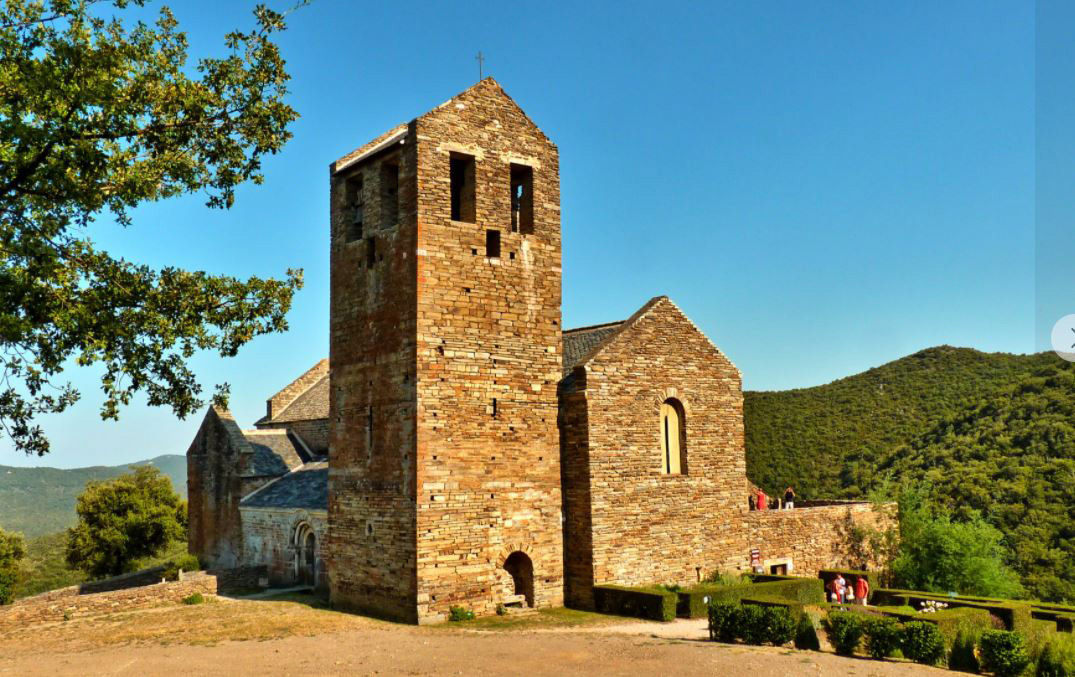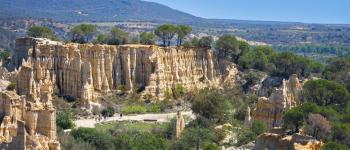
Sainte-Marie de Serrabona, overlooks the Boulès valley, from the top of the "good mountain", in Catalan the "serra bona".
The origin of Serrabone is at the end of the first millennium. A little before the establishment of the priory, a small church is mentioned, notably as a place of pilgrimage.
Then in 1052 Pierre Bernard founded the priory with 15 other monks around this church at the request of the Viscount of Cerdanya. It was an Augustinian community which obtained recognition of canonical rule in 1082.
The chapel of the priory was consecrated for the first time on an unknown date.
Then, in the 12th century, it was profoundly modified. The main nave, initially single, was completed to the north by a vaulted side nave. A vaulted gallery was built to the south. The monks built a cloister, a refectory, a dormitory ... and enlarged the church.
These works allowed a second consecration in 1151, consecration made by the bishop of Elne Artal II and the bishop of La Seu d'Urgell.
The church then took the name of Santa Maria de Serrabona.
In 1822 the poor and depopulated municipality of Serrabona was abolished. Shepherds and flocks often took refuge in the cloister or the partly ruined church.
Noticed by François Jaubert de Passa, sub-prefect, the priory is visited by Prosper Mérimée.
In 1875, it is classified among the first "historical monuments" which contributes to its definitive rescue.
At the beginning of the 20th century, its roodloft in pink marble was cleared.
Restored since the 1960s, this Romanesque art Mecca now dominates a vast protected natural area.
In 1968, the Jonquères d'Oriola family, owners, offered it to the Pyrénées-Orientales department, which opened it to the public.
During your visit, you will be able to admire, in the church, a splendid pink marble tribune with columns surmounted by sculpted capitals. The latter, decorated with floral motifs, angels and animals, are a superb testimony to the Romanesque art of Roussillon.
Another marvel is the south gallery of the cloister whose arcades open onto a splendid green setting.
Around the priory, a charming botanical garden rich in Mediterranean plants welcomes you.
Nowadays, guided tours, concerts and cultural events take place in the gardens and in the church.
Several walking paths start from the priory.
The team of guides of the Serrabona Priory offers guided tours of the monument lasting an average of 1 hour and 15 minutes.
For groups: by reservation on 04 68 84 09 30 or utilisateurserrabonne@cd66.fr
Priory of Serrabona
66130 Upstream ball
Tel: 04 68 84 09 30
http://www.ledepartement66.fr/102-prieure-de-serrabona.htm
Translated with www.DeepL.com/Translator
(free version)






